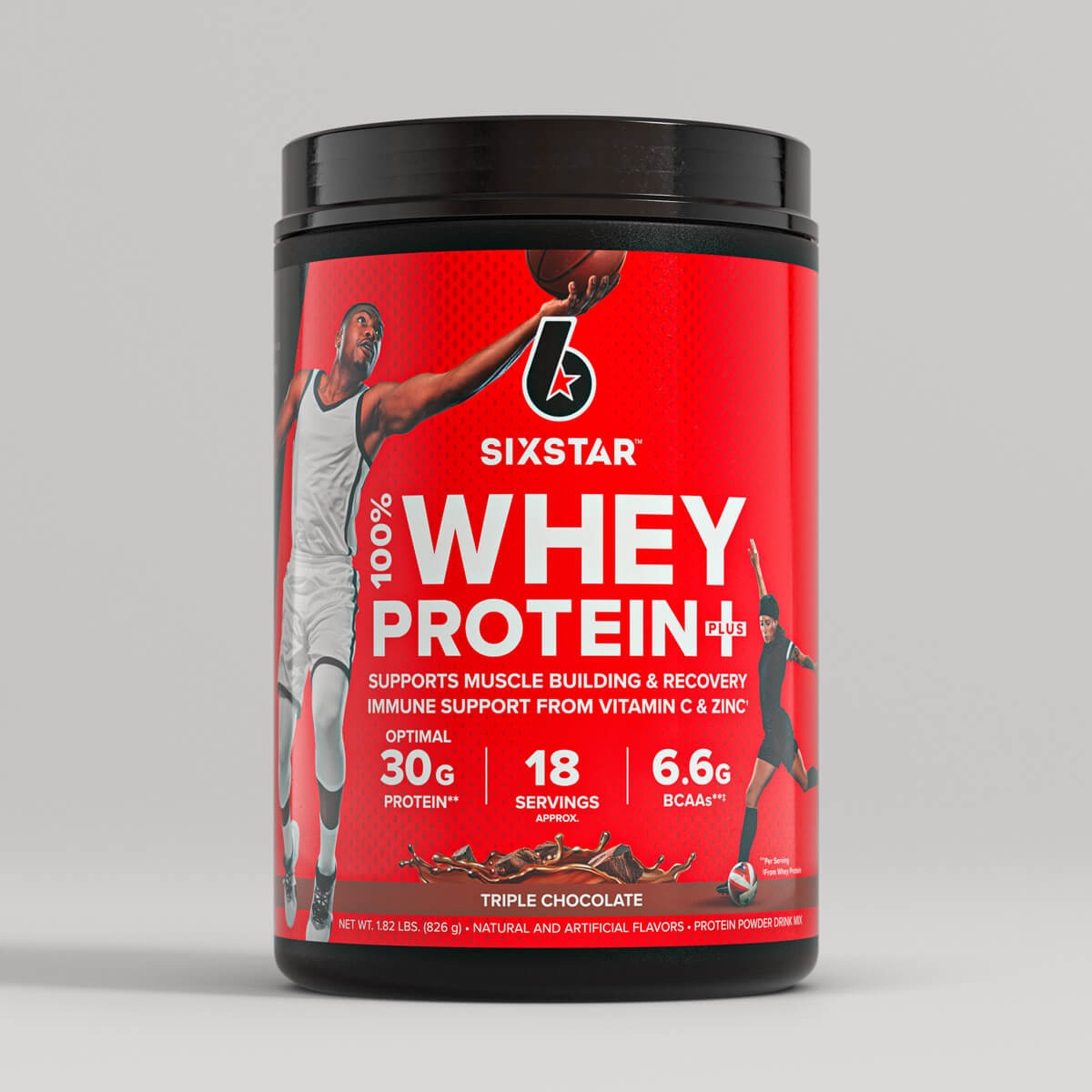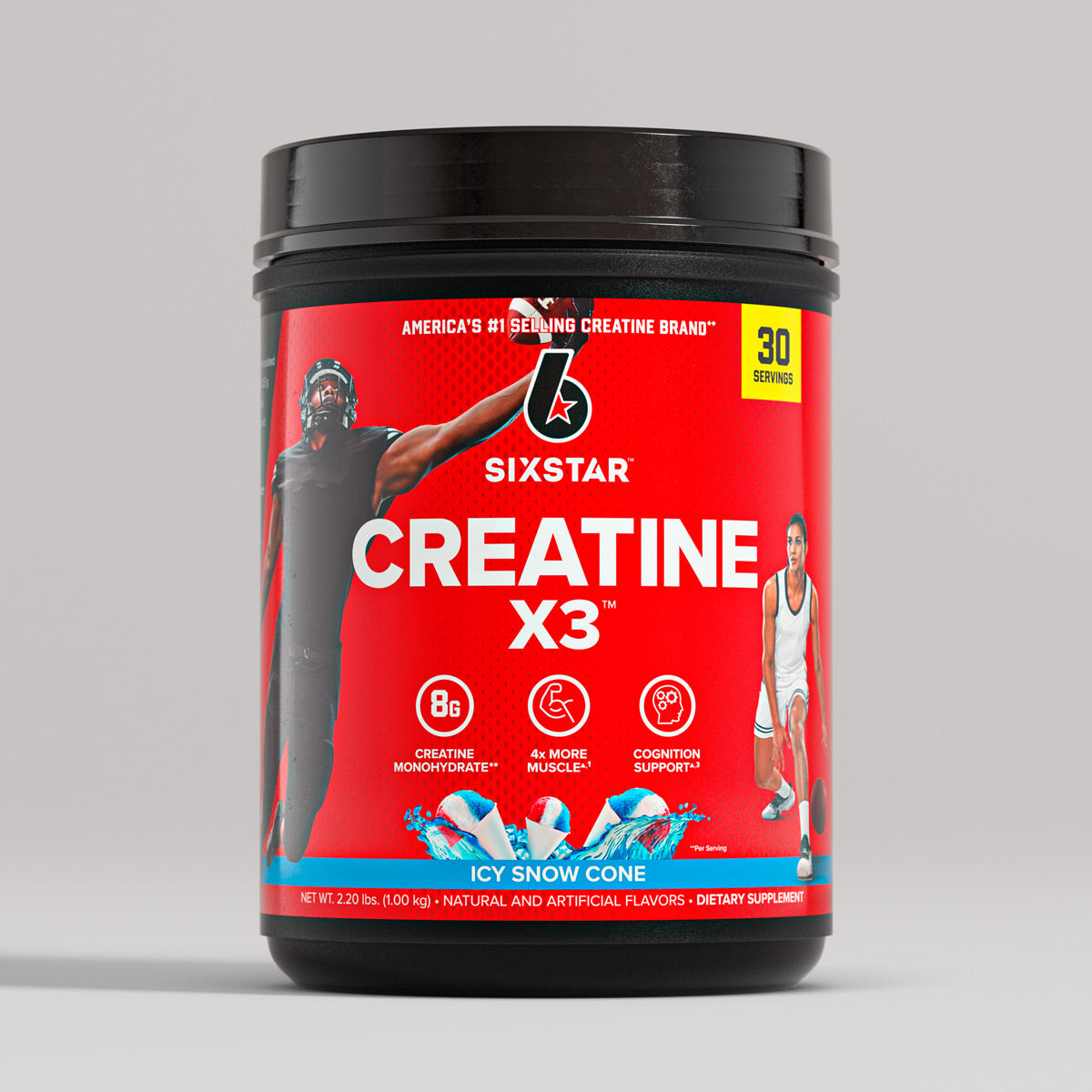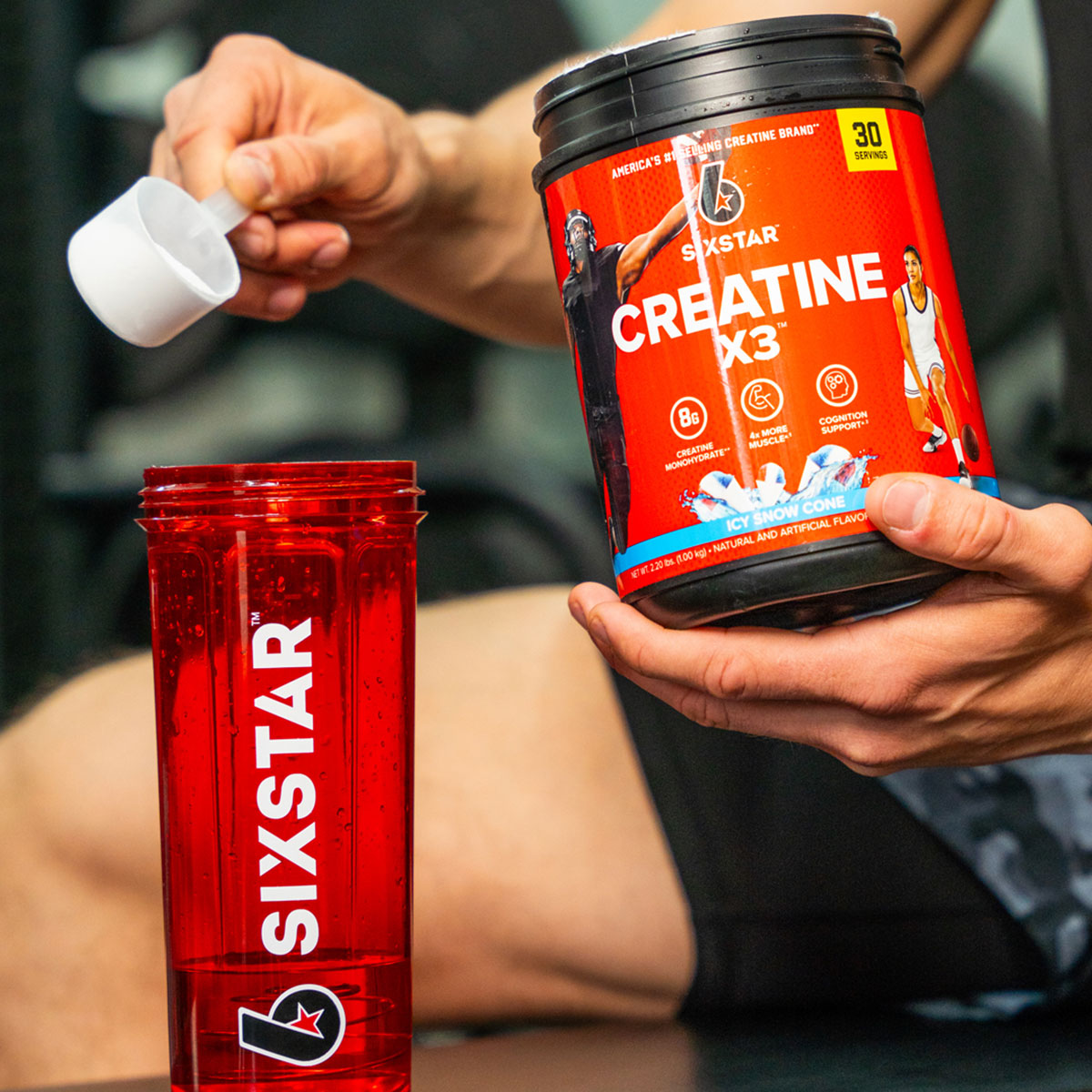In the realm of strength training, two disciplines stand tall: powerlifting and weightlifting. Each sport, with its unique set of rules, techniques, and challenges, offers a distinct path to mastering physical strength.
The issue is that although they may look and sound the same, the subtle but scientific differences between powerlifting and weightlifting vary greatly, and they’re important to keep in mind for new lifters starting at the beginning.
This article aims to explore these strength sports, providing insights into their nuances and the passion they ignite in their athletes.
Table of content
WHAT IS POWERLIFTING?
Powerlifting is a sport where athletes aim to lift as much weight as possible, often in three main lifts:
- Squat,
- Bench press, and
- Deadlift.
Powerlifting is all about pushing the limits of human strength. It's a sport that requires athletes to lift as much weight as possible. The focus is on pure strength, with less emphasis on technique or finesse. Although competitors are judged based on depth and other qualifications set out for each exercise.
Powerlifters train to lift heavy weights, often using low repetitions and high intensity. The goal is to build maximum muscle mass and increase overall strength.
Each lift in powerlifting is a unique test of different muscle groups, demanding not only physical strength but also mental toughness, determination, and a never-give-up attitude.
Even though it sounds simple; it's a sophisticated interplay of biomechanics, training methodology, and psychological fortitude.
Also Read: How many calories does weightlifting burn?
The Core Lifts of Powerlifting
Lorem ipsum dolor sit amet consectetur adipisicing elit. Illum neque eaque, autem sit soluta, voluptatum libero magnam tempore ullam at harum vel, ad reprehenderit, nemo veniam quas in voluptas hic. Lorem ipsum dolor, sit amet consectetur adipisicing elit. Natus id officia omnis suscipit aut architecto repellat a quia eaque reiciendis blanditiis perferendis hic, nihil, mollitia. Iste velit aperiam, numquam dolorem.
1. SQUAT
The squat, often the first lift in powerlifting competitions, is arguably the most deceivingly difficult lift out of the three powerlifts.
It primarily targets the muscles of the lower body, including the quadriceps, hamstrings, and glutes, while also engaging the core for stability.
Achieving the right depth and maintaining proper form is crucial for a successful squat, making it a challenging yet rewarding lift.
Apart from lowering and lifting weights a powerlifter must master the art of balance, control, and maintaining tension throughout the body.
2. BENCH PRESS
Often perceived as a measure of upper body strength, the bench press in powerlifting demands much more. A bench press is an exercise that can be used to strengthen the muscles of the upper body, including the pectorals, arms, and shoulders.
It involves lying on a bench and pressing weight upward using either a barbell or a pair of dumbbells. During a bench press, you lower the weight down to chest level and then press upwards while extending your arms. This movement is considered one repetition.
Also Read: How To Become More Athletic?
3. DEADLIFT
The deadlift is a full-body exercise that particularly challenges the back, glutes, hamstrings, and grip strength. Key aspects of proper deadlift form include maintaining a flat back, solid hip positioning, vertical shins, and ensuring that the shoulders remain stacked above the knees. This lift tests an athlete's grip strength, back power, leg drive, and overall endurance.
The deadlift is usually performed with a bar and plates or a fixed barbell, but you can do it with dumbbells. It is a specialty of powerlifters that you shouldn't ignore in general fitness training. Make deadlifts part of your strength-training workouts to build muscle and functional fitness.
The deadlift is not just about lifting heavy; it's about technique, timing, and sheer willpower. It's often the final lift in a competition, requiring athletes to muster every ounce of strength and determination they have left.
Also Read: How to train like an Athlete?
Benefits of Powerlifting
1. Increased Strength
Powerlifting is hugely beneficial to increasing overall strength through the body. The core exercises are huge compound movements all requiring multitudes of muscles across the body. There are very few muscles that don't get targeted in any 1 of these movements.
The squat and deadlift strengthen your core, back and legs, and the bench press strengthens most of the muscles of your upper body. Strength training builds muscle, increases bone density, and per recent studies on brain health.
2. Effective fat loss
As mentioned above powerlifting can require very heavy lifting creating a high intensity burn throughout the body allowing lifters to burn large amounts of calories and as a result fat.
In the long term, you can increase your metabolic rate. Given you are eating in a caloric deficit tailored to your needs powerlifting can be very beneficial to your fat loss requirements.
3. Better Skeletal Health
Bone density is the amount of bone mineral in bone tissue. The higher your bone density, the stronger your bones are and the less likely you are to receive an injury or fall victim to a disease like osteoporosis.
It doesn’t come with a surprise that intense resistance training, such as powerlifting, decreases numerous risk factors for osteoporosis by increasing strength and bone mass.
4. Increased Athletic Ability
Many of the activities in powerlifting improve other abilities by default. A study conducted shows a direct correlation between squat strength and sprint speed. There was also a direct correlation between squat strength and jump height.
So, if you want to run faster or jump higher, build a bigger squat through powerlifting. The strength of your back contributes to many other activities. There are few activities that being strong does not help in one way or another.
Also Read: 15 Best Bulking Foods for Great Results
5. Increased Muscle Mass & Improvement in Posture
Increased muscle mass can be useful in sports and can add a pleasing shape to an otherwise skinny physique. The three powerlifts ensure that all major muscles are worked, and assistance exercises are also done to shore up any muscular development gaps.
A balance increase in muscle mass can also assist in poor posture. Poor posture is usually caused by overuse or over activation of a muscle or group of muscles regarding one motion of a joint compared to the opposite.
WHAT IS WEIGHTLIFTING?
Weightlifting is a technical strength and power competitive sport that’s the only barbell sport in the Olympic program. This discipline, recognized in the Olympics, goes beyond mere strength; it demands agility, technique, and explosive power.
These Olympic lifts are highly technical and require mobility and coordination. Mastering weightlifting consists of two competition lifts:
- Snatch and
- Clean and Jerk:
Weightlifting's history is deeply rooted in the Olympic tradition, making it a prestigious and highly competitive sport. Athletes in weightlifting train to perfect two lifts, both of which are intricate and require years of dedicated practice to master. The sport offers a unique challenge, combining the elements of raw power, finesse, and split-second timing.
The Core of Weightlifting
1. SNATCH
The snatch, considered the most challenging of the two lifts, requires an athlete to lift the barbell from the floor to above their head in a single, fluid motion, keeping their arms straight and locked when the weight is received overhead.
To execute this move, the lifter will start by lifting the barbell using their legs and hips before quickly pulling their body down and under the barbell once it reaches chest level. With the weight lifted and under control, the athlete then stands up.
This movement demands a high level of body awareness and control, making it a true test of an athlete's skill and agility.
2. CLEAN & JERK
This two-step lift starts with the barbell at rest on the floor. The athlete then uses their legs to pull the weight up to their shoulders in one motion, receiving the weight in a squat position before standing upright (the “clean”). The second half of the lift has the athlete raising the bar overhead, with their arms fully extended and elbows locked.
To accomplish this (the “jerk”), the athlete, with the bar on their shoulders, dips slightly before driving the weight forcefully upwards, receiving the weight with either one foot forward and one foot back or both feet out to the side to maintain balance. Once under control, the feet are brought back in line as the athlete reaches their final position.
A weightlifter's training regimen often includes variations of the main lifts to improve specific aspects of the movements, such as snatch pulls or clean deadlifts. Additionally, exercises to enhance flexibility, coordination, and explosive power are integral. This comprehensive approach ensures that an athlete develops the necessary skills and physical capabilities to excel in weightlifting.
Benefits of Weightlifting
There are many different weightlifting benefits, particularly for our health and well-being. No matter if you are an Olympic weightlifter or only lift weights from time to time as part of your exercise routine, here are some of the many benefits you can experience through weightlifting:
1. Increased Muscle Mass and Strength
One of the most significant benefits of weightlifting is that it helps to increase muscle mass and strength. This occurs because lifting weights places stress on your muscles, which causes them to adapt and grow stronger. As your muscle mass and strength increase, you will be able to perform more challenging exercises, and you will also be less likely to experience muscle-related injuries.
2. Increased Metabolism and Fat Loss
Another significant benefit of weightlifting is that it can increase your metabolism and help you to burn fat. When you lift weights, your body burns calories not only during your workout but also after your workout. This occurs because weightlifting increases your muscle mass, and muscle tissue requires more energy to maintain than fat tissue. As a result, weightlifting can help you to lose weight and improve your body composition.
3. Better Cardiovascular Health
Although weightlifting is primarily a form of resistance training, it can also have benefits for your cardiovascular health. When you lift weights, your heart rate increases, and your blood vessels dilate. This improves blood flow and oxygen delivery to your muscles. Over time, weightlifting can help to reduce your risk of cardiovascular disease and improve your overall heart health.
4. Reduced Risk of Injury
Similar to improving posture and balance, weightlifting can also reduce the risk of injuries by strengthening the muscles, tendons, and ligaments that support your joints. When your muscles are stronger, they can better absorb the shock and stress that your joints experience during physical activity, which reduces your risk of injury. However, these complicated movements and heavy weights can lead to injury so make sure you focus on form and work within your limits.
5. Improved Athletic Performance
If you are an athlete, weightlifting can help to improve your performance in your sport. This is because weightlifting can increase your strength, power, and endurance, which are all essential for athletic performance. Additionally, weightlifting can help to reduce your risk of injury, which is crucial for athletes who rely on their bodies to perform at a high level.
Differences Between Powerlifting and Weightlifting
At their core, both sports focus on lifting weights in a competitive setting, with athletes striving to push their physical limits. This pursuit fosters a community spirit and camaraderie among athletes, irrespective of the sport they choose. The discipline, resilience, and mental toughness developed in training are universal traits shared by powerlifters and weightlifters alike.
Both require an unwavering dedication to training, a deep understanding of lifting mechanics, and a commitment to continuous improvement.
Here are four key differences between the competition sports:
1. Competition lifts
While weightlifting uses overhead movements, like the snatch and clean and jerk, none of the powerlifting’s moves are vertically overhead.
2. Modes of Exercise
Powerlifters rely primarily on strength, and weightlifters must balance strength, speed, and flexibility for their explosive power.
3. Speed of Execution
Powerlifting is done slower, resulting in fewer misses than in the quicker-paced weightlifting. For weightlifting, the lift will fail if the lifter does not open joints in the correct sequence. Alternatively, powerlifting’s slower tempo gives athletes a chance to correct.
4. Power Generated
Contrary to the names, weightlifting produces more force (or power per kilogram of bodyweight) than powerlifting. Weightlifting engages multiple muscle groups in the upper and lower body, which increases power generation.
THE BOTTOM LINE
The worlds of powerlifting and weightlifting, while distinct in their essence, are united in their celebration of human strength and determination. Utilizing these exercises regardless of your physical goals can be a useful tool to improve strength and athletic performance. Remember to fuel your body, ensuring you get enough protein can help you with your strength gains will pre-workout supplements may help you focus and deliver your all when every training session counts. Luckily brands like SixStar are trusted and have you covered in both of those regards.
Whether you choose the path of the powerlifter, with its focus on maximal strength in three key lifts, or the route of the weightlifter, with its emphasis on technique and explosive power, you embark on a journey to remember.
Embrace the discipline, savor the progress, and revel in the strength you build along the way. The barbell awaits – the choice is yours.
References:
- Ferland PM, Comtois AS. Classic Powerlifting Performance: A Systematic Review. J Strength Cond Res. 2019 Jul;33 Suppl 1:S194-S201. doi: 10.1519/JSC.0000000000003099. Erratum in: J Strength Cond Res. 2021 Jan 1;35(1):e1. doi: 10.1519/JSC.0000000000003350. PMID: 30844981.
- Brechue WF, Abe T. The role of FFM accumulation and skeletal muscle architecture in powerlifting performance. Eur J Appl Physiol. 2002 Feb;86(4):327-36. doi: 10.1007/s00421-001-0543-7. PMID: 11990746.
- Smolarek Ade C, Ferreira LH, Mascarenhas LP, McAnulty SR, Varela KD, Dangui MC, de Barros MP, Utter AC, Souza-Junior TP. The effects of strength training on cognitive performance in elderly women. Clin Interv Aging. 2016 Jun 1;11:749-54. doi: 10.2147/CIA.S102126. PMID: 27330282; PMCID: PMC4896469.
- Keiner M, Brauner T, Kadlubowski B, Sander A, Wirth K. The Influence of Maximum Squatting Strength on Jump and Sprint Performance: A Cross-Sectional Analysis of 492 Youth Soccer Players. Int J Environ Res Public Health. 2022 May 11;19(10):5835. doi: 10.3390/ijerph19105835. PMID: 35627371; PMCID: PMC9140541.
- Antunes JP, Oliveira R, Reis VM, Romero F, Moutão J, Brito JP. Comparison between Olympic Weightlifting Lifts and Derivatives for External Load and Fatigue Monitoring. Healthcare (Basel). 2022 Dec 10;10(12):2499. doi: 10.3390/healthcare10122499. PMID: 36554023; PMCID: PMC9777922.
- Thomas MH, Burns SP. Increasing Lean Mass and Strength: A Comparison of High Frequency Strength Training to Lower Frequency Strength Training. Int J Exerc Sci. 2016 Apr 1;9(2):159-167. PMID: 27182422; PMCID: PMC4836564.































